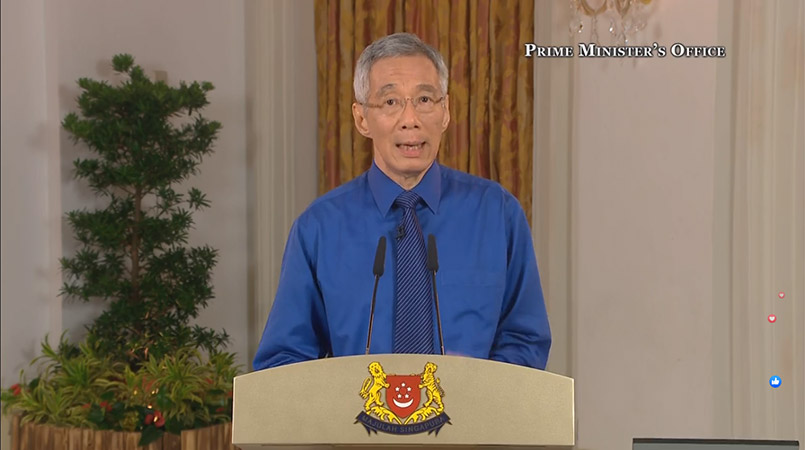Singapore will extend its “circuit breaker” measures another four weeks to June 1, Prime Minister Lee Hsien Loong announced today, two weeks into a virtual lockdown meant to curb the spread of the coronavirus.
Saying the measures are working but more is required, Lee’s announcement came hours after the Health Ministry reported 1,111 new infections mostly involving migrant workers living in dormitories, bringing the total number of cases to 9,125.
“We want to bring down the community numbers decisively. We also want to make sure if any leakage occurs from the dorms to the wider community, we can detect it and contain early and prevent new clusters from forming and bursting out of control,” Lee said in a late afternoon address to the nation.
Lee also said that stricter measures including entry restrictions to popular places such as wet markets would be imposed. The number of essential services allowed to operate would also be reduced.
Speaking directly to Singapore’s families, he said only one person per household should leave the homes for essential trips.
“If you do need to go out then go by yourself not as a group or as a family. Even when exercising outside, do so only by yourself and only in your neighborhood,” he added.
He also cited a need for increased testing and the goal of manufacturing tests domestically. Acknowledging the privacy concerns of forthcoming digital tracking apps, he said they would need to be balanced with public health needs.
Singapore’s total number of confirmed cases has more than doubled in the past week after its failure to safeguard densely packed populations of low-paid workers resulted in the virus spreading unchecked. The workers, many of whom come from abject poverty in South Asia and China, account for the overwhelming majority of new cases.
While it won early praise for its efforts and avoided taking stronger steps to limit public movement, the city-state has all but ground to a halt since measures were put in place early this month. For now, they are set to expire May 4.
Singapore now has the most known infections in Southeast Asia, though rates of testing are inconsistent and lower in many neighboring countries. Eleven deaths have been attributed to the virus.
Other stories you should check out:
Heehee: We read Ho Ching’s Facebook riddle so you don’t have to




